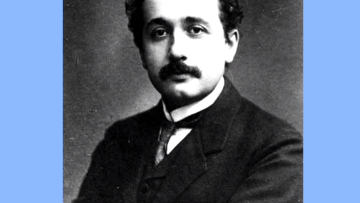An old-fashioned tale of romance and estrangement, Graham Farmelo's Oxford Mathematics Public Lecture charts the 350-year relationship between Mathematics and Physics and its prospects for the future. Might things be less dramatic in future? Might they just have to be 'going steady' for a while?
Crossing the Pond: European Mathematicians in 1920s America
Abstract
American mathematics was experiencing growing pains in the 1920s. It had looked to Europe at least since the 1890s when many Americans had gone abroad to pursue their advanced mathematical studies. It was anxious to assert itself on the international—that is, at least at this moment in time, European—mathematical scene. How, though, could the Americans change the European perception from one of apprentice/master to one of mathematical equals? How could Europe, especially Germany but to a lesser extent France, Italy, England, and elsewhere, come fully to sense the development of the mathematical United States? If such changes could be effected at all, they would likely involve American and European mathematicians in active dialogue, working shoulder to shoulder in Europe and in the United States, and publishing side by side in journals on both sides of the Atlantic. This talk will explore one side of this “equation”: European mathematicians and their experiences in the United States in the 1920s.
12:45
Brackets, involutivity and generalised geometry for 4d, N=1 backgrounds
Abstract
Supergravity backgrounds are an essential ingredient in string theory or field theories via AdS/CFT. The simplest example of a 4d, N=1 background is the product of four-dimensional Minkowski space with a seven-dimensional manifold with G_2 holonomy in M-theory. For more complicated backgrounds where we allow non-zero fluxes, the supersymmetry conditions can be rephrased in terms of G-structure data. The geometry of these backgrounds is often complicated and their general features are not well understood.
In this talk, I will define the analogue of G_2 geometry for generic 4d, N=1 backgrounds with flux in both type II and eleven-dimensional supergravity. The geometry is characterised by a G-structure in 'exceptional generalised geometry' that includes G_2 structures and Hitchin's generalised geometry as subcases. Supersymmetry is then equivalent to integrability of the structures, which appears as an involutivity condition and a moment map for diffeomorphisms and gauge transformations. I will show how this works in a few simple examples and discuss how this can be used to understand general properties of supersymmetric backgrounds.
COXIC: Complexity Oxford Imperial College
Complexity Oxford Imperial College, COXIC, is a series of workshops aiming at bringing together researchers in Oxford and Imperial College interested in complex systems. The events take place twice a year, alternatively in Oxford and in London, and give the possibility to PhD students and young postdocs to present their research.
Schedule:
2:00: Welcome
2:15: Maria del Rio Chanona (OX), On the structure and dynamics of the job market
2:35: Max Falkenberg McGillivray (IC), Modelling the broken heart
2:55: Fernando Rosas (OX), Quantifying high-order interdependencies
3:15 - 4:00: Coffee break
4:00: Rishi Nalin Kumar (IC), Building scalable agent based models using open source technologies
4:20: Rodrigo Leal Cervantes (OX) Greed Optimisation of Modularity with a Self-Adaptive Resolution Parameter
4:40: TBC
5:00: Social event at the Lamb & Flag
12:45
Topology, superposition and typicality in quantum gravity
Abstract
I will describe recent advances in the study of quantum gravity where one can explicitly show in examples that superpositions of states with fixed topology can change the topology of spacetime. These effects lead to paradoxes that are resolved in effective field theory by the introduction of code subspaces. I will also talk about more typical states and issues related on how to decide if a black hole horizon is smooth or not.
The Sum-Product Phenomenon
Abstract
In 1983, Erdos and Szemerédi conjectured that for any finite subset of the integers, either the sumset or the product set has nearly quadratic growth. Applications include incidence geometry, exponential sums, compressed image sensing, computer science, and elsewhere. We discuss recent progress towards the main conjecture and related questions.


